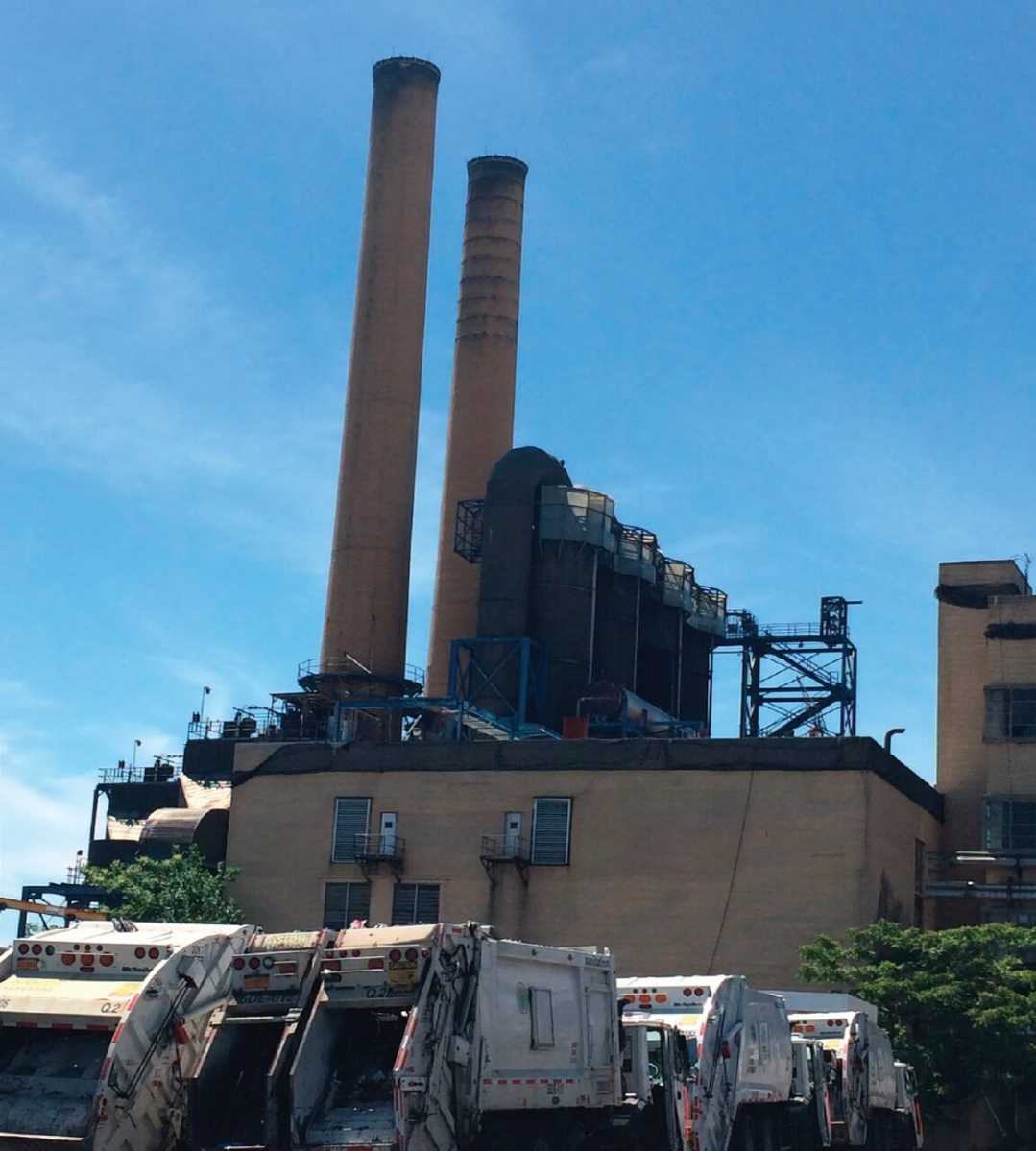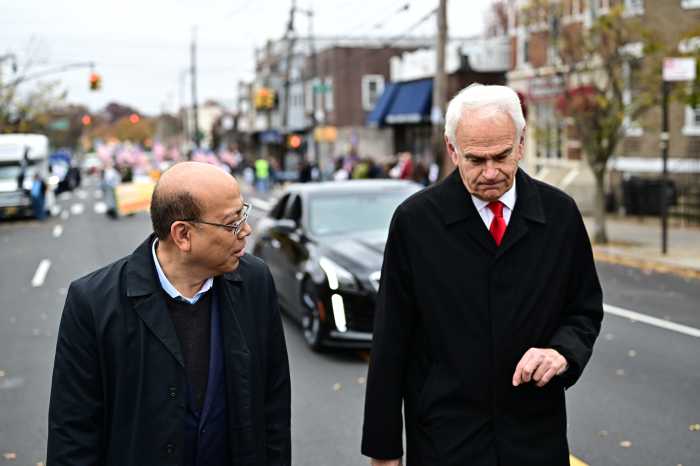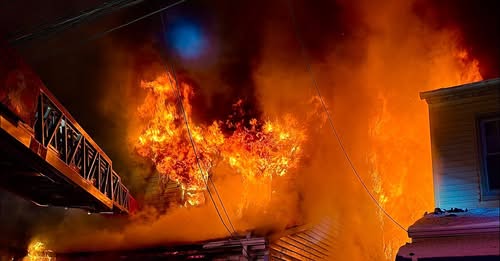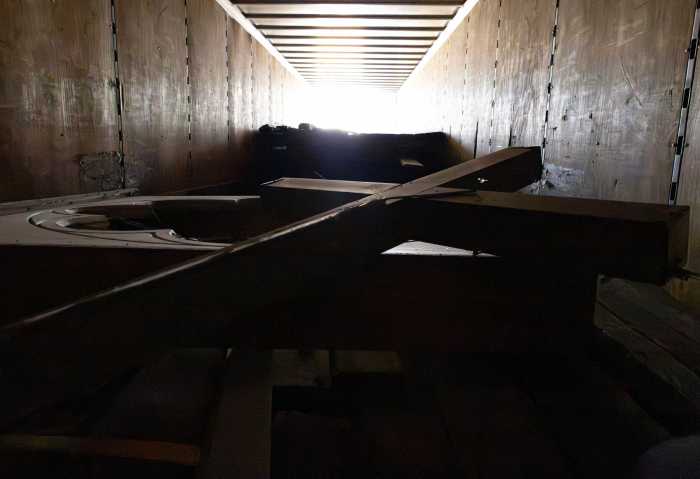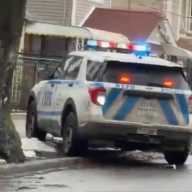Nearly 30 years ago, New York City found itself grappling with a garbage crisis of epic proportions. It wasn’t due to a strike of sanitation workers or some unforeseeable disaster. It was simply about volume — there was too much trash, and too few places to put it.
The most notorious symbol of the city’s — and, for that matter, the nation’s — trash problem was the Mobro 4000, a barge loaded with tons of trash from New York City and Long Island that went on a months-long Atlantic odyssey. It was supposed to be docked and offloaded in North Carolina for transformation into methane gas, but the North Carolina government refused it, fearing the trash contained medical waste and other hazardous materials.
The garbage barge was then rejected in Louisiana, Mexico and Belize. Nobody wanted New York City’s trash. Ultimately, the Mobro 4000 and its stinky haul were returned to the city, and the garbage was incinerated.
Burning trash was a common practice in New York City for decades, and even in the more environmentally conscious 1980s, the city looked upon incineration as a critical part of handling the garbage crisis. The city proposed building what they called “Resource Recovery Plants” across the city, including one site in industrial Maspeth.
On July 23, 1987, the Ridgewood Times reported on a meeting of Community Board 5’s Environmental Committee that focused on the proposed construction of a new incinerator located off the Maspeth Creek near 47th Street. The Sanitation Department already had a large incinerator near 58th Street in Maspeth, and another one a short drive away at the Brooklyn Navy Yard.
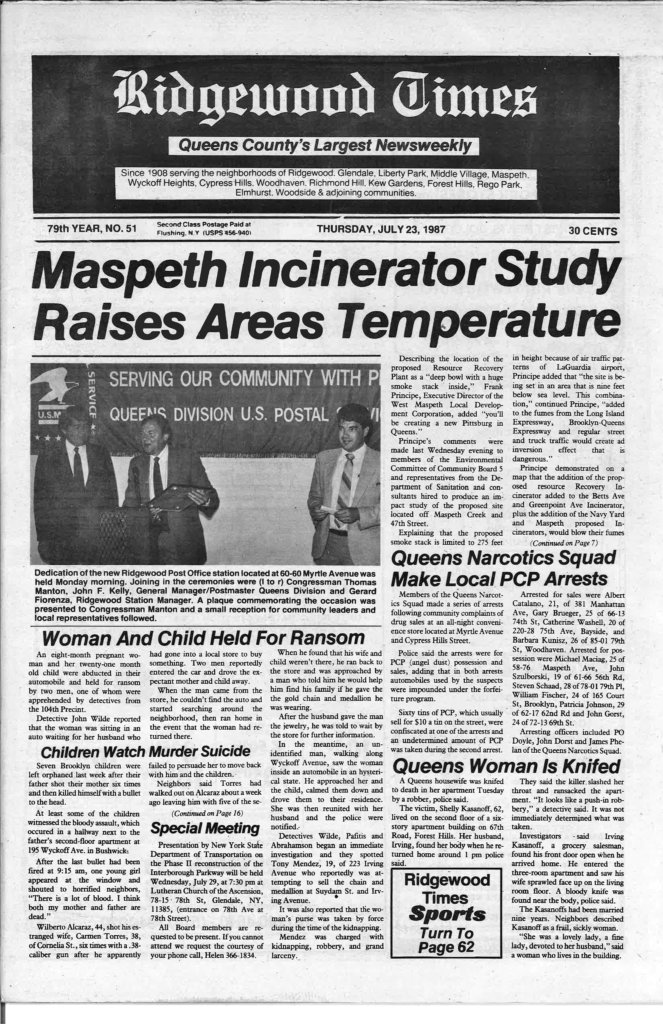
The proposed incinerator was to be located in the heart of Maspeth’s industrial area, close to the recently closed Phelps Dodge smelting plant and the heavily polluted Newtown Creek. It also happened to be, as West Maspeth Local Development Corporation Executive Director Frank Principe said at the meeting, at a point of Maspeth 7 feet below sea level.
Principe compared the situation to a “deep bowl with a huge smoke stack inside,” and he warned that the fumes billowed by the proposed incinerator would hang low over the neighborhood. When combined with emissions from the nearby Long Island and Brooklyn- Queens expressways, he warned, the residents could experience an air “inversion effect that is dangerous.”
“We appreciate the problems of garbage disposal faced by the city, but we don’t want Maspeth dumped on,” Principe told Sanitation Department representatives in attendance. Principe’s arguments, and those of residents fearful of other side effects of the proposed incinerator, ultimately led the Sanitation Department to abandon the idea. In the years to come, the city would find another way to reduce its garbage stream: by mandating recycling of glass, plastic, paper and metal products.
Not only was recycling a more eco-friendly alternative to burning waste, it also allowed the city to save tens of millions of dollars annually.
Today the industrial site where the Maspeth incinerator was proposed remains in use for local industrial purposes. Maspeth residents, of course, still deal with the pollution in the Newtown Creek — now a Superfund site awaiting a major cleanup — and all the noxious fumes from vehicles traveling major highways through the neighborhood.
Considering what might have been, however, they may at least breathe somewhat easier.
Reprinted from the June 16, 2016 Ridgewood Times
* * *
If you have any remembrances or old photographs of “Our Neighborhood: The Way It Was” that you would like to share with our readers, please write to the Old Timer, c/o Ridgewood Times, 38-15 Bell Blvd., Bayside, NY 11361, or send an email to editorial@ridgewoodtimes.com. Any print photographs mailed to us will be carefully returned to you upon request.

